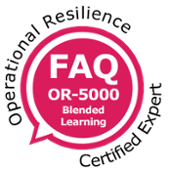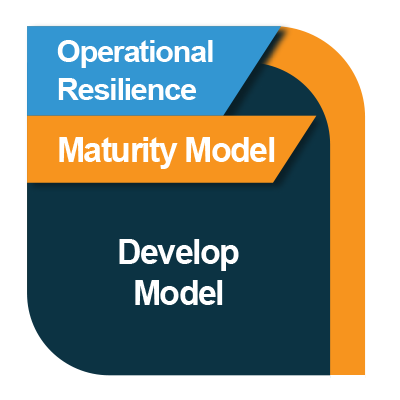ISO 22316: 2017 - Security and Resilience - Organisational Resilience - Principles and Attributes
 ISO 22316:2017 is an international standard that provides organisations with guidelines on how to enhance their organisational resilience.
ISO 22316:2017 is an international standard that provides organisations with guidelines on how to enhance their organisational resilience.
This standard offers a comprehensive framework to help organisations prepare for, respond to, and recover from disruptions, ensuring they can adapt and thrive in the face of challenges.
ISO 22316:2017 focuses on building a resilient organisation by identifying and fostering key attributes that contribute to resilience, such as a clear purpose, strong leadership, a culture that supports resilience, effective information sharing, and the ability to anticipate and manage change.
It emphasises the importance of a coordinated approach across various disciplines within an organisation to achieve long-term sustainability and success, even in uncertain or volatile environments.
This standard is particularly useful for organisations aiming to build or strengthen their resilience capacity. It enables them to effectively manage internal and external risks, disruptions, and uncertainties. It provides principles and guidance on establishing and evaluating these resilience attributes, allowing organisations to maintain business continuity and improve their adaptive capabilities.
ISO 22316:2017 came into effect in May 2017 and has since become an essential tool for organisations worldwide to enhance their organisational resilience in a structured and systematic way. By following its principles, organisations can better prepare for future disruptions, ensuring they can survive and grow in the face of adversity.
Click to view the source of the Table of Contents for ISO22316:2017 Security and resilience — Organizational resilience — Principles and attributes
A Strategic Guide to Organisational Resilience for Professionals
Introduction: The Imperative of Organisational Resilience
In today’s volatile business landscape, organisations face increasing disruptions—cyberattacks, supply chain failures, economic instability, and geopolitical crises.
As defined by ISO 22316:2017, organisational resilience is the ability to absorb, adapt, and thrive amid these challenges.
Unlike traditional risk management, which focuses on mitigation, resilience emphasises anticipation, response, and recovery, ensuring long-term sustainability.
For crisis management professionals, resilience is about survival and turning disruptions into opportunities. This expanded guide delves deeper into the principles, attributes, and actionable strategies from ISO 22316 to help organisations build a proactive, adaptive, and cohesive resilience framework.
Why Organisational Resilience is a Strategic Priority
Resilience is not a static goal but an ongoing capability shaped by leadership, culture, and operational agility. Organisations that prioritise resilience benefit from:
1. Enhanced Risk Anticipation
- Proactively identifying vulnerabilities before they escalate into crises.
- Moving beyond compliance-driven risk management to predictive analytics and scenario planning.
2. Stronger Cross-Functional Coordination
- Breaking down silos between risk, security, operations, and leadership teams.
- Ensuring a unified crisis response rather than fragmented efforts.
3. Greater Stakeholder Confidence
- Investors, customers, and regulators increasingly demand resilience as a measure of stability.
- Organisations with strong resilience frameworks recover faster, maintaining trust during disruptions.
4. Competitive Advantage
- Resilient organisations adapt to market shifts faster than competitors.
- Example: Companies with robust supply chain resilience outperformed peers during the COVID-19 pandemic.
Core Principles of Organisational Resilience (Expanded)
ISO 22316 outlines five foundational principles that underpin resilience. These should guide all strategic and operational decisions:
1. Leadership & Shared Vision
Why it matters: Resilience starts at the top. Leaders must embed resilience into corporate culture rather than treating it as a compliance exercise.
Key Actions:
- Communicate resilience as a strategic priority.
- Ensure board-level oversight of resilience initiatives.
- Foster a culture where employees at all levels feel empowered to report risks.
2. Understanding the Operating Environment
Why it matters: Organisations must continuously scan for internal and external threats (e.g., geopolitical risks, technological disruptions, workforce challenges).
Key Actions:
- Conduct horizon scanning to detect emerging risks.
- Use stress testing and scenario planning to assess potential impacts.
- Map critical dependencies (e.g., suppliers, IT systems, key personnel).
3. Adaptive Decision-Making
Why it matters: Slow or rigid decision-making can be catastrophic in a crisis.
Key Actions:
- Implement decentralised decision-making where frontline teams can act swiftly.
- Use real-time data analytics to inform crisis responses.
- Establish pre-approved crisis protocols (e.g., emergency funds, backup suppliers).
4. Collaboration & Communication
Why it matters: Silos create blind spots. Resilience requires cross-functional teamwork.
Key Actions:
- Conduct interdisciplinary crisis simulations (e.g., involving IT, HR, legal, PR).
- Build strong relationships with external partners (government agencies, industry groups).
- Ensure clear, transparent communication during disruptions to prevent misinformation.
5. Learning & Innovation
Why it matters: Post-crisis reviews are often overlooked yet critical for improvement.
Key Actions:
- Conduct after-action reviews following incidents to identify lessons learned.
- Encourage experimentation and adaptive strategies (e.g., piloting new crisis response technologies).
- Benchmark against industry best practices to stay ahead of evolving threats.
Key Attributes of a Resilient Organisation
ISO 22316 identifies several structural and cultural attributes that enable resilience:
|
Attribute |
What It Means |
How to Strengthen It |
|
Adaptive Culture |
Employees embrace change rather than resist it. |
- Encourage psychological safety for risk reporting. |
|
Risk-Aware Mindset |
The organisation anticipates threats rather than reacting to them. |
- Regular risk assessments. |
|
Resource Flexibility |
Financial, human, and technological resources can be reallocated quickly. |
- Maintain contingency budgets. |
|
Stakeholder Trust |
Strong relationships with customers, regulators, and partners. |
- Transparent communication during crises. |
Practical Steps to Build Resilience
1. Conduct a Resilience Maturity Assessment
- Evaluate current capabilities using frameworks like ISO 22316 or the CERT Resilience Management Model (CERT-RMM).
- Identify gaps in preparedness, response, and recovery.
2. Integrate Resilience into Strategic Planning
- Align resilience goals with business objectives (e.g., supply chain diversification for operational continuity).
- Ensure budget allocation for resilience initiatives (e.g., cybersecurity upgrades, crisis training).
3. Develop a Dynamic Crisis Response Framework
- Move beyond static plans to modular, adaptable playbooks.
- Example: Instead of a single "pandemic response plan," create scalable protocols for different disruption levels.
4. Invest in Resilience Training & Simulations
- Conduct tabletop exercises for leadership and functional drills for operations teams.
- Test crisis communication strategies to avoid PR disasters.
5. Leverage Technology for Resilience
- AI and predictive analytics for early threat detection.
- Cloud-based redundancy for critical systems.
- Automated incident reporting to accelerate response times.
Summing Up ... Resilience as a Continuous Journey
Organisational resilience is not a one-time project but a strategic capability that evolves with the threat landscape. By adopting ISO 22316’s principles, crisis management professionals can shift from reactive firefighting to proactive future-proofing.
Key Takeaways for Crisis Leaders:
- Resilience is a competitive advantage—organisations that adapt faster outperform peers
- Leadership commitment is non-negotiable—culture drives resilience more than policies
- Collaboration breaks silos—cross-functional teamwork is essential
- Learning from disruptions ensures continuous improvement.
For further guidance, explore ISO 22300 (Terminology) and ISO 22301 (Business Continuity) as complementary standards.
Final Thought
"The goal of resilience is not just to survive the storm but to learn how to dance in the rain."
More Information About OR-5000 [OR-5] or OR-300 [OR-3]
To learn more about the course and schedule, click the buttons below for the OR-300 Operational Resilience Implementer course and the OR-5000 Operational Resilience Expert Implementer course.
 |
 |
 |
 |
 |
![[BL-OR] [3-4-5] View Schedule](https://blog.bcm-institute.org/hs-fs/hubfs/hub_generated/resized/e4287b59-1a43-4e10-8e43-c73b27b3ca39.png?width=172&height=50&name=e4287b59-1a43-4e10-8e43-c73b27b3ca39.png) |
![[BL-OR] [3] FAQ OR-300](https://blog.bcm-institute.org/hs-fs/hubfs/hub_generated/resized/294e989f-8613-4bf3-96a5-a89408cfb9ca.png?width=150&height=150&name=294e989f-8613-4bf3-96a5-a89408cfb9ca.png) |
 |
|
 |
 |
 |


![Email to Sales Team [BCM Institute]](https://blog.bcm-institute.org/hs-fs/hubfs/hub_generated/resized/850988ce-aa7d-4953-95cf-797635341edd.png?width=100&height=100&name=850988ce-aa7d-4953-95cf-797635341edd.png)
![[OR] Disclaimers and Usage of eBook](https://3893111.fs1.hubspotusercontent-na1.net/hubfs/3893111/Disclaimer%20and%20Proper%20Usage%20Morepost/IC_OR_Legal%20Disclaimer.png)
![[OR] [ISO] [C4] 22316:2017 Evaluating Resilience](https://3893111.fs1.hubspotusercontent-na1.net/hubfs/3893111/CM%20ISO22316%20Morepost/IC_CM_ISO22316_2017_Evaluating%20Resilience.png)
![[OR] [ISO] [C3] 22316:2017 Resilience Attributes](https://3893111.fs1.hubspotusercontent-na1.net/hubfs/3893111/CM%20ISO22316%20Morepost/IC_CM_ISO22316_2017_Resilience%20Attributes.png)
![[OR] [ISO] [C1] 22316:2017 Introduction](https://3893111.fs1.hubspotusercontent-na1.net/hubfs/3893111/CM%20ISO22316%20Morepost/IC_CM_ISO22316_2017_Introduction%2c%20Scope%2c%20Definitions.png)
![[OR] [ISO] [C2] 22316:2017 Key Principles and Attributes](https://3893111.fs1.hubspotusercontent-na1.net/hubfs/3893111/CM%20ISO22316%20Morepost/IC_CM_ISO22316_2017_Principles.png)
![[OR] [ISO] [C0] Organisational Resilience: A Guide Based on ISO 22316:2017](https://3893111.fs1.hubspotusercontent-na1.net/hubfs/3893111/CM%20ISO22316%20Morepost/IC_CM_ISO22316_2017_Table%20of%20Content.png)



